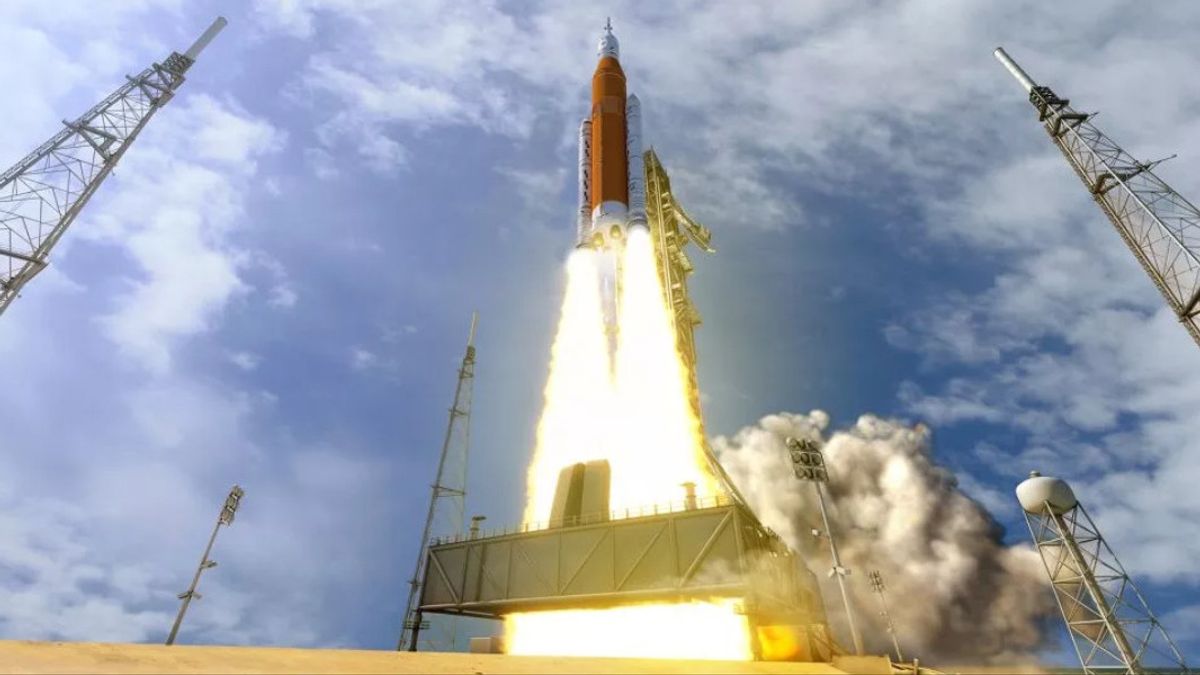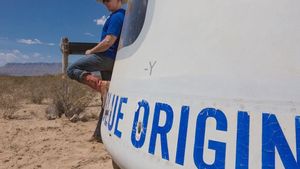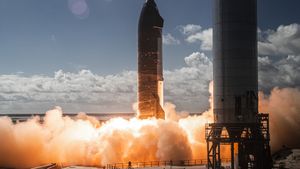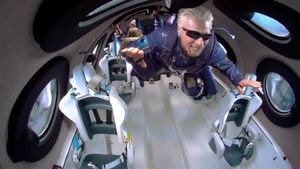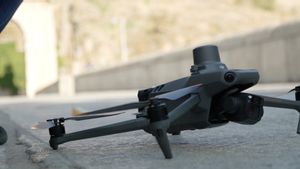JAKARTA - The year 2021 has ended, and during that time we have witnessed many amazing space missions, even creating a new era of space tourism.
Of course, 2022 seems to be the launch year for space missions that are no less interesting than the previous year.
How not, finally for 50 years the American National Aeronautics and Space Administration (NASA) will launch the most powerful rocket to the Moon. Although unmanned, this launch aims to first find out how the situation there. Before the manned mission begins at a time determined by NASA.
Therefore, here are five important missions to look out for in the coming months, as VOI quoted from Digital Trends and Space, Saturday, January 1.
1. Starship Orbital Test Flight
SpaceX plans to fly the Starship spacecraft into orbit for the first time early next year. The company targets early March for its first Starship orbital launch, with as many as a dozen test flights to follow by 2022.
Both the Starship vehicle and its Super Heavy booster have now been completed. If all goes according to plan, the maiden flight will put the Starship in orbit for a short time before re-entering Earth's atmosphere and crashing into the Pacific Ocean.
Starship consists of two elements, both of which are designed to be reusable. If SpaceX is able to recover and reuse the Starship during this year's test flights, operational missions could begin in 2023. The company plans to use the Starship for manned missions to Mars.
While early March is still in the pipeline, the company is now awaiting approval from the Federal Aviation Administration (FAA). The announcement is expected at the end of February, and if that works in SpaceX's favor, then a week or two later the company will launch the world's most powerful rocket.
The stacked Super Heavy and Starship is 394 feet (120 meters) high, making it about nine meters taller than NASA's SLS rocket and the tallest launch vehicle ever built.
Its incredible thrust of about 16 million pounds is the largest ever seen in a rocket, making it about twice as powerful as the Saturn V rocket that propelled NASA astronauts to the Moon five decades ago.
2. Ax-1 to the International Space Station (ISS)
SpaceX will deploy its Falcon 9 rocket and Crew Dragon spacecraft to carry three civilians to the ISS on a week-long voyage organized by Axiom Space, a private Texas-based space company.
The Ax-1 mission will be crewed by Canadian investor and philanthropist Mark Pathy, American businessman Larry Connor, former Israeli Air Force pilot Eytan Stibbe, and will also include mission commander and former NASA astronaut Michael López-Alegría.
The three astronauts reportedly paid $55 million each for the privilege of staying on the ISS outpost. While in the orbiting station they will work on their own medical-related research and philanthropic projects.
The excursions are part of NASA's new effort to commercialize the space station, using the flights to raise funds while increasing access to space for civilians.
The Russian Space Agency, Roscosmos, recently flew two amateur astronauts to the ISS for a short visit, and shortly before that arranged trips for two Russian filmmakers.
3. Artemis I to the Moon and Back
The first test flight of NASA's most powerful rocket to date, Artemis I, and a major stepping stone to the first manned Moon mission in 50 years.
NASA plans to put the first women and people of color on the lunar surface before the end of the decade. But first, he needed to try out the new hardware that would get them there, the Space Launch System (SLS) rocket and the Orion spacecraft.
The first test flight, Artemis I is currently targeted for March and will involve an unmanned flight from the Moon by Orion.
The fully stacked SLS rocket stands at 322 feet (98.1 meters) and will generate about 8.8 million pounds of thrust at launch, which is 13 percent more than the shuttle and 15 percent more than the Saturn V rocket.
Neither the rocket nor the spacecraft have undergone extensive testing but are yet to fly. If the Artemis I mission goes well, Artemis II will perform a cross-crew flight to the Moon, while Artemis III will attempt the first crewed Moon landing since 1972.
SEE ALSO:
4. Psyche Visits Metal Asteroids
SpaceX will launch NASA's Psyche mission to the unique metallic asteroid in July 2022. The mission will use one of SpaceX's Falcon Heavy rockets and is scheduled to launch from Launch Complex 39A at Cape Canaveral in Florida.
The mission will study a metal asteroid called Psyche, which orbits the Sun between Mars and Jupiter. The asteroid appears to be the exposed iron-nickel core of the early planet, one of the building blocks of our Solar System.
Therefore, studying this new asteroid will provide new clues about how terrestrial planets like Earth formed.
The Psyche mission is slated for launch nearly three years after the last Falcon Heavy flight in June 2019. The rocket will have a busy year ahead with at least three US Space Force missions and commercial payloads including the Viasat-3 broadband satellite and the Astranis communications satellite on the map for launch in 2022.
5. Russia's Moon Landing Mission
Russia's plans to launch a mission to the Moon have also been postponed to July 2022. The mission, known as Luna 25, is the country's first mission to the lunar surface in 45 years, and will be the first to land south of the Moon.
Luna 25 was originally scheduled to launch in October 2021 aboard the Soyuz-2-1b frigate rocket from Russia's Vostochny Cosmodrome. However, the mission was delayed due to a problem identified with the spacecraft's landing system during a critical test.
More time is needed to complete a successful test run of the Luna 25 soft landing system. When the mission launches, the spacecraft will carry nine instruments on board.
Luna 25 will land at the south pole of the Moon to examine the lunar regolith and the exosphere (atmosphere). The region is being considered for future manned lunar missions by NASA and other space agencies.
The Soviet Union sent several unmanned missions to the Moon between the 1950s and 1970s, including the first spacecraft to reach the surface (Luna 2 in 1959), the first spacecraft to land on soft ground (Luna 9 in 1966) and the first lunar rover (Luna 17/Lunokhod 1 1970), among other milestones.
The English, Chinese, Japanese, Arabic, and French versions are automatically generated by the AI. So there may still be inaccuracies in translating, please always see Indonesian as our main language. (system supported by DigitalSiber.id)
